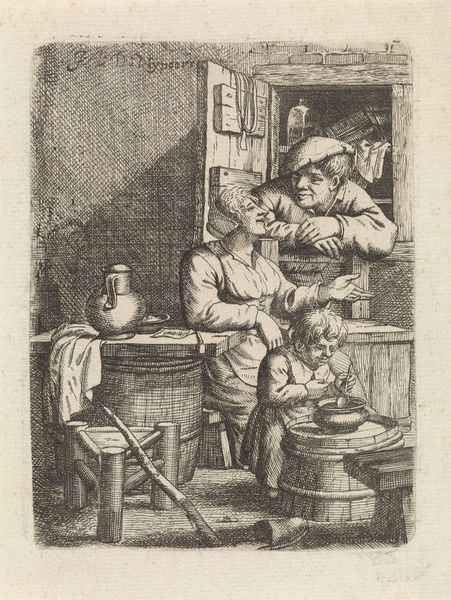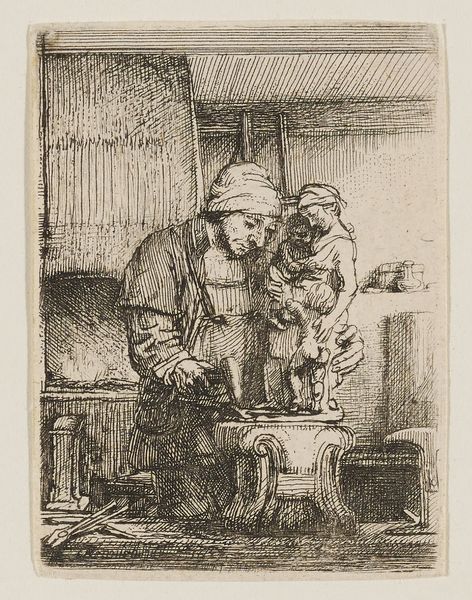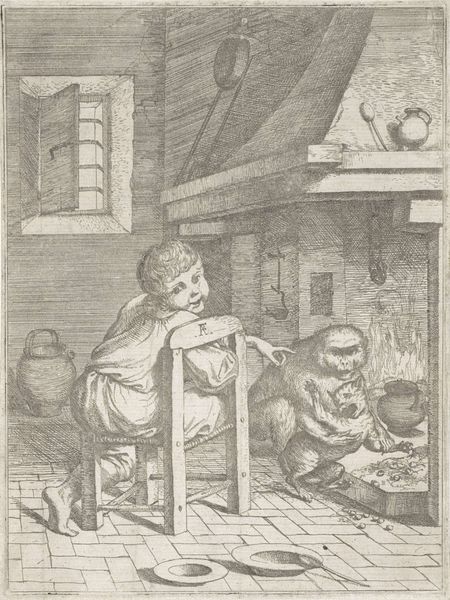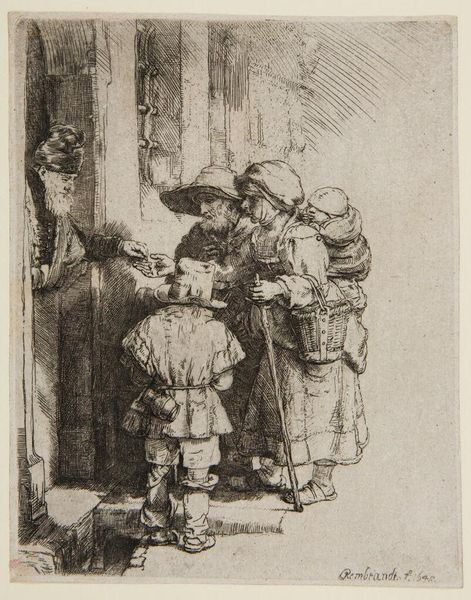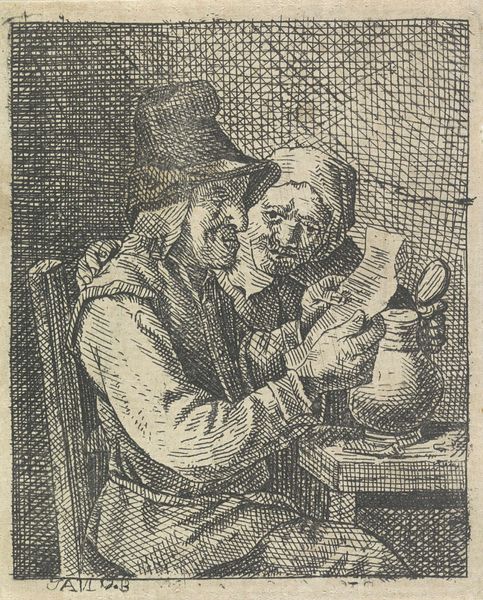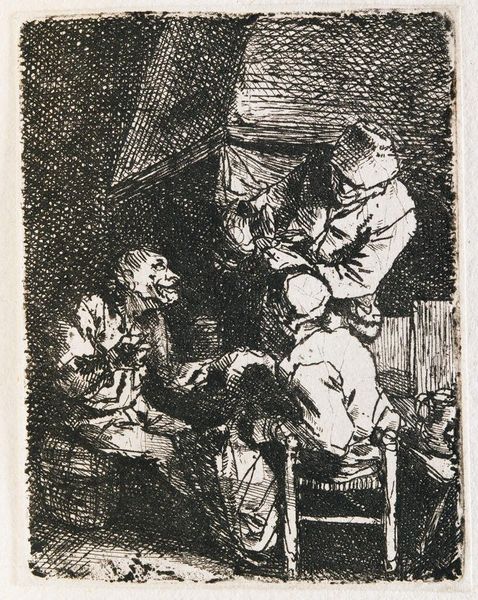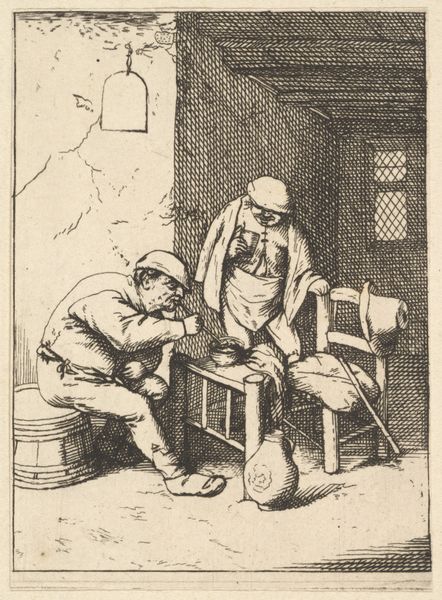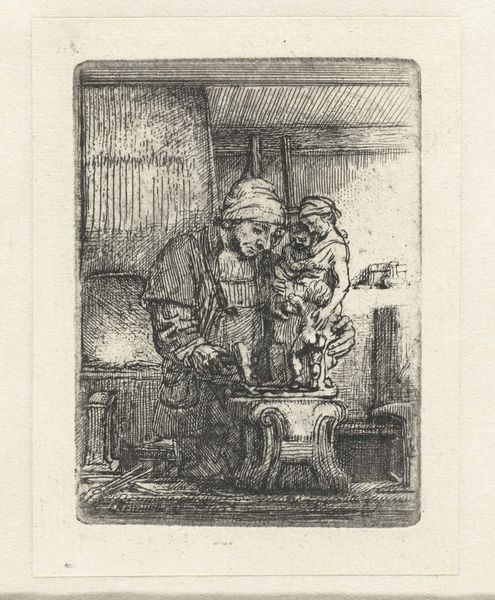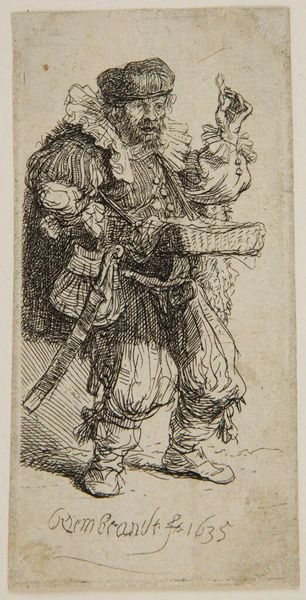
drawing, etching
#
portrait
#
drawing
#
baroque
#
dutch-golden-age
#
pen sketch
#
etching
#
line
#
genre-painting
Copyright: Public Domain: Artvee
Editor: Here we have Rembrandt van Rijn's "The Goldsmith," created in 1655 using etching. It’s so intricate for its size, you know? The details, the light... it makes me wonder about the story of labour and value. How do you read this piece? Curator: As a materialist, I see the act of creation foregrounded here. Look at the hands – gnarled, working. Consider the tools laid out. Rembrandt is directing our gaze to the process itself, the manual labor involved in transforming raw material into something of worth. Editor: So, you’re suggesting it’s less about the object being created and more about the conditions of its creation? Curator: Precisely. Think about the social context. The Dutch Golden Age was a time of burgeoning capitalism, where artisanal production played a vital role. The Goldsmith here could be seen as an emblem of that burgeoning mercantile society, whose wealth rested, quite literally, on labour such as this. The texture and weight of material comes alive under this social understanding. What’s your take on the role of this person’s labour? Editor: I hadn’t really thought of it that way, to be honest. I was initially focused on the artistry itself, the way he captures the light. Now I'm also thinking of things such as skill being passed down and what sort of workshop this scene might take place in. Curator: It brings into relief the actual making of art and craft, collapsing the boundaries that have served the interests of wealthy art owners since then. Editor: I see. By focusing on the tangible aspects of the process, you're providing a richer understanding of the social underpinnings that created it. Curator: Absolutely. Thinking materially makes us remember art comes from a place, by the hands of a maker embedded in the material.
Comments
No comments
Be the first to comment and join the conversation on the ultimate creative platform.
